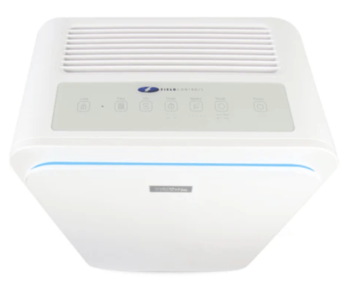
Transform your living space into a haven of clean, fresh air with smart air purifiers. Discover how top brands are reshaping indoor air quality with cutting-edge technology.
A Breath of Fresh Air for Your Home
Imagine stepping into your home and feeling the air embrace you—clean, crisp, and invigorating. It’s not just purified; it’s intelligent. Your air purifier has already adjusted to the changing environment, ensuring every breath you take is as pure as possible. This is the magic of a smart air ecosystem.
In this blog post, we’ll explore how leading air purifier brands are revolutionizing indoor air quality, the technology behind these innovations, and how you can create your own smart air ecosystem. Let’s embark on a journey to redefine the way we breathe.

The Rise of Smart Air Purifiers: A Technological Leap
Air purifiers have evolved from basic filtration devices to sophisticated smart systems. Initially, they were designed to remove dust and allergens, but they lacked adaptability and intelligence. Today, brands like Dyson, Levoit, and Coway have transformed these devices into smart companions for healthier living.
From Passive to Proactive
Traditional air purifiers operated on fixed settings, often running inefficiently. Smart purifiers, on the other hand, use advanced sensors to monitor air quality in real-time and adjust their performance accordingly.
Integration with Smart Homes
Modern air purifiers are equipped with Wi-Fi connectivity, allowing seamless integration with smart home systems. You can control them via apps or voice assistants like Alexa and Google Assistant, making air purification effortless.
Why a Smart Air Ecosystem is Essential
Creating a smart air ecosystem isn’t just about convenience; it’s about enhancing your quality of life. Here’s why it matters:
- Health Benefits: Smart purifiers remove pollutants, allergens, and even viruses, promoting better respiratory health.
- Energy Efficiency: These devices optimize their operation based on air quality, reducing energy consumption.
- Real-Time Insights: Access to air quality data empowers you to make informed decisions about your environment.
- Seamless Connectivity: Integration with other smart devices creates a cohesive and efficient home ecosystem.
Features That Define Leading Smart Air Purifiers
Let’s delve into the standout features of top smart air purifiers:
1. Advanced Filtration Systems
Brands like Dyson and Coway use multi-layered filtration systems, including HEPA filters and activated carbon filters, to eliminate pollutants effectively.
2. Smart Sensors
These sensors detect microscopic particles and adjust the purifier’s settings automatically, ensuring optimal performance.
3. Connectivity
Wi-Fi and Bluetooth connectivity enable remote control and integration with smart home platforms.
4. Energy Efficiency
Features like auto-shutoff and sleep mode ensure minimal energy usage without compromising air quality.
5. Aesthetic Design
Modern purifiers are designed to complement your home decor, proving that functionality and style can coexist.
Building Your Smart Air Ecosystem
Creating a smart air ecosystem involves more than just purchasing a purifier. It’s about integrating multiple devices to work together harmoniously. Here’s how you can do it:
Step 1: Choose the Right Purifier
Select a smart air purifier that suits your needs. For large spaces, consider models like the Coway Airmega 400S. For smaller rooms, the Levoit Core 200S is a compact yet powerful option.
Step 2: Integrate with Smart Home Devices
Connect your purifier to your smart home system using platforms like Amazon Alexa or Google Home. This allows for voice control and automation.
Step 3: Add Complementary Devices
Enhance your ecosystem with devices like smart thermostats, humidifiers, and air quality monitors. These devices can communicate with your purifier to optimize air quality.
Step 4: Monitor and Adjust
Use the purifier’s app to track air quality and adjust settings as needed. Many apps also provide insights and recommendations for improving your indoor environment.
A Day in the Life of a Smart Air Ecosystem
Let’s bring this concept to life with a story.
Meet Alex, a tech-savvy homeowner living in a bustling city. His mornings start with his smart purifier detecting high pollen levels outside. It adjusts its settings to ensure the indoor air remains clean and allergen-free.
As Alex enjoys his morning coffee, his purifier sends a notification: “Air quality is excellent.” He feels reassured knowing his home is a sanctuary of clean air.
Later, while Alex is at work, his purifier detects a spike in indoor pollutants caused by his dog’s playful antics. It adjusts itself automatically, and Alex receives an update on his phone.
By evening, the purifier enters sleep mode, ensuring a quiet and restful night. Alex’s smart air ecosystem works tirelessly, giving him peace of mind.
The Future of Smart Air Ecosystems
The future of smart air ecosystems is promising. Here’s what we can expect:
- AI-Powered Insights: Predictive analytics to anticipate air quality changes and recommend actions.
- Integration with Wearables: Syncing with fitness trackers to provide personalized air quality recommendations.
- Sustainability Features: Eco-friendly materials and energy-efficient designs.
Transform Your Home, Transform Your Life
Creating a smart air ecosystem is more than a technological upgrade; it’s a lifestyle choice that prioritizes health, convenience, and sustainability. With leading brands like Dyson, Levoit, and Coway paving the way, the possibilities are endless.
So, why wait? Take the first step toward a smarter, healthier home today. Your lungs will thank you.

Free replacement filter and lamp with purchase of Trio Plus
